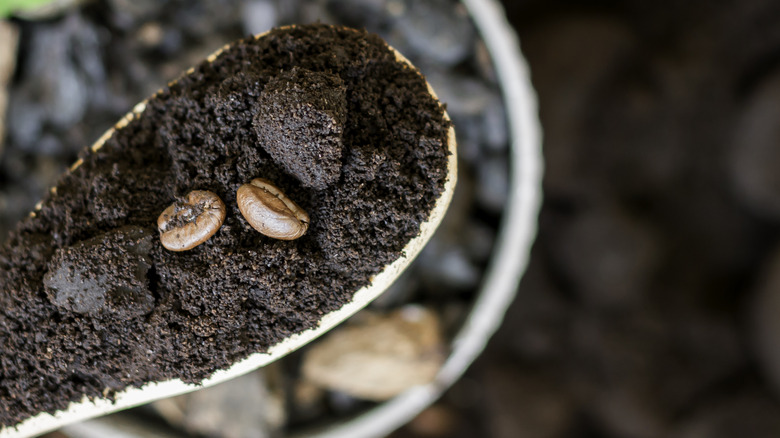Spider plants are one of the most common species chosen as houseplants. They’re members of the lily family known for producing long tendrils (like spider legs!) that spill gracefully over their pots. They’re also excellent air purifiers that thrive in acidic soil, making them the perfect species to help you repurpose your coffee grounds.
Yes, that’s right — you can stop throwing away the grounds in those half-filled Keurig cups and used paper filters. These leftovers, which have a slightly acidic pH, act as a natural fertilizer and soil stabilizer for acid-loving spider plants. “The nitrogen in coffee grounds is primarily found in proteins and other organic molecules unavailable to the plants until soil microorganisms break them down into simple ions. As a result, the nitrogen in coffee grounds is released slowly over time as the plants need it,” writes conservationist Lisa Ogden in Barnyards & Backyards.
But the hidden benefit of coffee grounds? They’re a great pest deterrent. You can keep your spider plant healthy and pest-free by sprinkling coffee grounds into its pot. Naturally high in caffeine and compounds known as diterpenes, both of which are highly toxic to insects, coffee grounds are the perfect defense against pests that plague spider plants, like mites, aphids, scales, and flies.
How to use coffee grounds to deter spider plant pests

While humans love coffee for its robust taste and aromatic qualities, the pests that like to victimize your spider plant will be instantly deterred by its presence in the soil. All you need to do is sprinkle coffee grounds around the perimeter of the pot, ensuring not to place them too close to the plant.
But to really get the most bang for your buck, let the grounds dry out in the sun for 24 hours or so. Then, grind the grounds into a fine powder using a mortar and pestle or the handle end of a wooden spoon. Doing so will allow you to spread a more even, wider swath of coffee grounds than if you simply used clumpy, wet grounds straight out of the Keurig cup or coffee maker.
Be sure to lift your spider plant’s arms and legs so you don’t get any powder on the plant, and only sprinkle the grounds along the inner rim of the pot. Spreading the grounds too close to the plant could be too strong for the plant to handle — almost like handing a cup of black coffee to a tea drinker.
